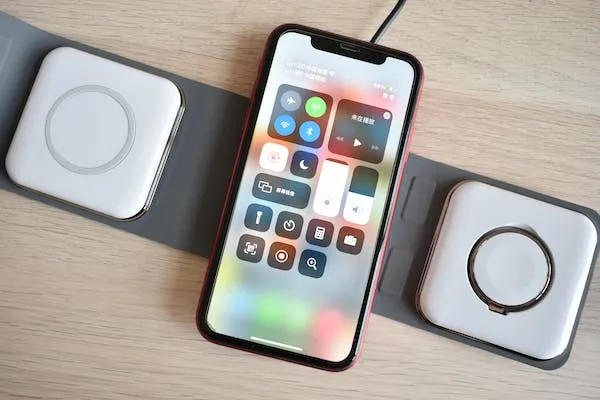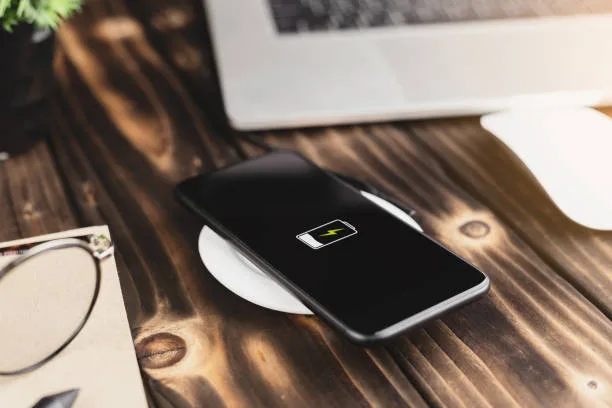Wireless Charger: Energize Your Devices| 2023
Wireless Charger
Wireless power transmission is a sort of inductive charging, which is often referred to as wireless charging or cordless charging.
Working principle of Wireless charger.

Electricity for portable equipment is delivered using electromagnetic induction. Electric toothbrushes, power tools, automobiles, and medical equipment are all examples of items that utilize inductive charging. The portable equipment does not have to be exactly aligned or establish electrical contact with a dock or socket in order to be placed close to a charging station or inductive pad.
Because energy is transferred by inductive coupling, inductive charging is given that name. An induction coil in the charging station or pad is first subjected to alternating current.
The magnetic field is produced by the flowing electric charge and is subject to variations in strength due to variations in the amplitude of the electric current. In the induction coil of the portable device, this shifting magnetic field generates an alternating electric current, which is then rectified into direct current. The direct current also supplies operating power or charges a battery.
When the inductive charging system employs resonant inductive coupling, which involves adding a capacitor to each induction coil to generate two LC circuits with a particular resonance frequency, greater distances between the sender and receiver coils can be reached.
The resonance frequency and the frequency of the alternating current are matched, and the frequency is selected based on the distance needed to achieve maximum efficiency.
Recent advancements in this resonant system include the use of a movable gearbox coil (i.e., mounted on an elevating platform or arm) and the use of different materials for the receiver coil, such as silver-plated copper or occasionally aluminum, to reduce weight and reduce resistance caused by the skin effect.

Advantages of Wireless Charger
Protected connections –
Corrosion is prevented when electronics are enclosed and kept out of the water and air. Electrical failures like short circuits are less likely to occur as a result of insulation failure, especially in areas where connections are made and broken regularly.
Low danger of infection –
When electricity is transmitted to embedded medical equipment using a magnetic field that passes through the skin, infection hazards connected with wires penetrating the skin are avoided.
Durability –
Because there is no longer a constant need to plug and unplug the item, the socket and connecting cable are subjected to far less wear and tear.
Greater aesthetic appeal and convenience.

Automated high power inductive charging of electric vehicles enables more frequent charging sessions, which subsequently extends the driving range.
Without the need for human plugging and unplugging, inductive charging systems can run automatically. Higher reliability is the outcome of this.
Theoretically, automatic inductive charging on roadways enables automobiles to run endlessly.
Disadvantages of Wireless Charger
The following drawbacks have been reported for low-power (i.e., fewer than 100 watts) inductive charging systems, although they might not apply to high-power (i.e., more than 5 kilowatts) inductive charging systems for electric vehicles.
Slower charging –
When the quantity of power supplied is the same, devices take 15% longer to charge due to the reduced efficiency.
More expensive – Inductive charging additionally necessitates driving electronics and coils in the device and charger, increasing the complexity and expense of production.
Inconvenience – A mobile device can be moved and utilized while charging when it is linked to a cable, albeit only within a certain radius.
The mobile device cannot be moved or easily operated while charging in the majority of inductive charging implementations because it must be left on a pad.
There must be nothing between the transmitter and receiver for some standards to continue charging over a distance.
Different inductive chargers do not work with every device. However, certain gadgets now support a number of standards.
Longer charge durations are only one expense associated with inefficiency. Compared to cable chargers, inductive chargers emit more waste heat, which could shorten the life of the battery.

Tests have been conducted to determine how these fields, when applied at low frequencies, can influence the organs. You may experience light flashes, tingling in your nerves, or vertigo when exposed to different levels of frequencies.
You might feel your skin warming up or even burning at higher ranges. Low EMF is a common daily occurrence for most people. With a wireless charger, typically on a nightstand close to the head, is where these frequencies are most frequently felt.
FAQ
Any phone can use a wireless charger?
Any wireless charger will work with your smartphone as long as they adhere to the same wireless charging standard.
What is a wireless charger ?
A wireless charger is a device that uses electromagnetic fields to transfer energy wirelessly to compatible devices for charging, eliminating the need for traditional charging cables.
Top 10 wireless charger Company ?
- Anker
- Belkin
- Samsung
- Apple
- Mophie
- Aukey
- RAVPower
- Yootech
- CHOETECH
- Seneo
Follow our Instagram page digiknowledge.co.in and visit our website https://digiknowledge.co.in/ for Interesting Facts, Technology, Cars, Bikes, and Latest NEWS.





Ravi“What is the root cause of Malaria, Cholera and Typhoid according to Ayurveda vs. medical science?”You are right when you say that a thousand years ago, the rationale of above problems was not understood. But the approach of modern science as equally incorrect: as stupid as was the earlier definition.If you are saying the root cause of these diseases lies in germ theory, then you have to explain why some are not infected during an epidemic and some who get the infection and manage to stay alive without medicines while others die!Understanding a possible cause does not mean that the approach is to resolve the root cause.Trying to remove the apparent root cause by “science” has not been successful as the root cause has not been addressed. Discoveries linked to Malaria have received 4 Nobel prizes in the past 100 years: Malaria still is rampant around the world. And there is no understanding of the outcome that if malaria does get removed world wide, what would we lose in exchange.